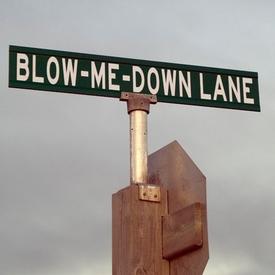First Time Using HRM At The Gym

smilewithkatherine
Posts: 82 Member
Used my new Heart Rate Monitor at the gym today for the first time. According to the treadmill I burned 394 calories, but according to my HRM I actually burned 296 calories. My advice is if you workout, especially at the gym, invest in a HRM with a chest strap because the calories you actually do burn may just surprise you. Before when I was planning out my meals for the day I would base them on how many calories I burn according to the treadmill. I thought I was eating within my calorie range for the day. Well I know can clearly see I was eating well over my calories.
0
Replies
-
Interesting isn't it? I was much the same but am a HRM convert now!
Trouble is, as you get fitter, it's harder to raise your heart rate, so the number of calories burned can go down, unless you mix the exercise up a bit. But, at least with HRM you know how much you're really doing.0 -
Used my new Heart Rate Monitor at the gym today for the first time. According to the treadmill I burned 394 calories, but according to my HRM I actually burned 296 calories. My advice is if you workout, especially at the gym, invest in a HRM with a chest strap because the calories you actually do burn may just surprise you. Before when I was planning out my meals for the day I would base them on how many calories I burn according to the treadmill. I thought I was eating within my calorie range for the day. Well I know can clearly see I was eating well over my calories.
It's a mistake to assume that, because the numbers are different, the HRM is, by default, "more accurate". There are a number of variables that can affect the accuracy of HRM calorie numbers. In this case, if you were not holding on to the handrails and if you entered your weight when starting the workout on the TM, the TM numbers are likely more accurate than your HRM numbers.0 -
My HRM knows my age, weight, height and gender. The treadmill asks only for my weight and age. They both use the same heart rate (the treadmill takes the data from my Polar unit) and, invariably, the treadmill calculates 10-20% fewer calories. Because the treadmill uses fewer variables, I go with the reading from my HRM.0
-
My HRM knows my age, weight, height and gender. The treadmill asks only for my weight and age. They both use the same heart rate (the treadmill takes the data from my Polar unit) and, invariably, the treadmill calculates 10-20% fewer calories. Because the treadmill uses fewer variables, I go with the reading from my HRM.
In this case the "fewer variables" is a positive. The treadmill doesn't need any of the other information. It doesn't even need heart rate--and the heart rate display on the treadmill is just for heart rate; treadmills do not use heart rate to determine calories (as I said--they don't need to).
The treadmill directly measures workload. Workload and weight are all that is needed to determine calories for simple, steady-state cardio movements like walking or running. The HRM needs all those other factors because it has to use math to guess at your calories and the extra factors make the guess a little less random.
It is a triumph of groupthink and marketing by HRM companies that they have convinced the public that all the smoke and mirrors of their devices means they are somehow more "advanced" than any other alternative.0 -
It is a triumph of groupthink and marketing by HRM companies that they have convinced the public that all the smoke and mirrors of their devices means they are somehow more "advanced" than any other alternative.
How true!
A number of years ago I bought a Polar FS1 HRM best $29 I ever spent. I got caught up in the "buy better" hype and bought a Polar F6 HRM for $116. The truth be told the FS1 is easier to see the numbers. The F6 has more features but I have to keep the user info current for it to guess the calories. When I cycle I use them both the FS1 on the handlebar as a speedometer,
the F6 as a record keeper on my wrist.
All in all I think they do a good job of monitoring my heart.:laugh:0 -
My HRM knows my age, weight, height and gender. The treadmill asks only for my weight and age. They both use the same heart rate (the treadmill takes the data from my Polar unit) and, invariably, the treadmill calculates 10-20% fewer calories. Because the treadmill uses fewer variables, I go with the reading from my HRM.
In this case the "fewer variables" is a positive. The treadmill doesn't need any of the other information. It doesn't even need heart rate--and the heart rate display on the treadmill is just for heart rate; treadmills do not use heart rate to determine calories (as I said--they don't need to).
The treadmill directly measures workload. Workload and weight are all that is needed to determine calories for simple, steady-state cardio movements like walking or running. The HRM needs all those other factors because it has to use math to guess at your calories and the extra factors make the guess a little less random.
It is a triumph of groupthink and marketing by HRM companies that they have convinced the public that all the smoke and mirrors of their devices means they are somehow more "advanced" than any other alternative.
Wow, your treadmill is definitely smarter than mine!0 -
My weight loss method has been to wear my HRM all day, including while sleeping, to get an idea of the total calories I expend on a daily basis. I adjust my food intake accordingly and try not to consume more than I've expended before bedtime. I know that I burn about 600 calories while sleeping. So far, I've lost 18 pounds. The eye opener for me was that I really didn't know how many calories I expended before, and it is way less than I thought. That makes me more motivated to stay on track calorie wise.0
-
My weight loss method has been to wear my HRM all day, including while sleeping, to get an idea of the total calories I expend on a daily basis. I adjust my food intake accordingly and try not to consume more than I've expended before bedtime. I know that I burn about 600 calories while sleeping. So far, I've lost 18 pounds. The eye opener for me was that I really didn't know how many calories I expended before, and it is way less than I thought. That makes me more motivated to stay on track calorie wise.
You are using your hrm incorrectly, and as a result, getting bad readings. Do the research, I just don't have the patience to explain it anymore.0 -
So, as my weight hasn't changed in a few months, I burnt the same number of calories on the treadmill this morning running 10km/hr as I did 3 months ago running the same 10km/hr?The treadmill directly measures workload. Workload and weight are all that is needed to determine calories for simple, steady-state cardio movements like walking or running. The HRM needs all those other factors because it has to use math to guess at your calories and the extra factors make the guess a little less random.0 -
My weight loss method has been to wear my HRM all day, including while sleeping, to get an idea of the total calories I expend on a daily basis. I adjust my food intake accordingly and try not to consume more than I've expended before bedtime. I know that I burn about 600 calories while sleeping. So far, I've lost 18 pounds. The eye opener for me was that I really didn't know how many calories I expended before, and it is way less than I thought. That makes me more motivated to stay on track calorie wise.
HRM's aren't made to wear all the time. You'll get hugely over exaggerated numbers doing that. The mathematical equations that it uses are based on an elevated heart rate so when you are at rest or under your fat burning zone the numbers are not correct. To wear something all the time you need a BodyBugg or FitBit which is configured for that type of use.0
This discussion has been closed.
Categories
- All Categories
- 1.4M Health, Wellness and Goals
- 398.2K Introduce Yourself
- 44.7K Getting Started
- 261K Health and Weight Loss
- 176.4K Food and Nutrition
- 47.7K Recipes
- 233K Fitness and Exercise
- 462 Sleep, Mindfulness and Overall Wellness
- 6.5K Goal: Maintaining Weight
- 8.7K Goal: Gaining Weight and Body Building
- 153.5K Motivation and Support
- 8.4K Challenges
- 1.4K Debate Club
- 96.5K Chit-Chat
- 2.6K Fun and Games
- 4.8K MyFitnessPal Information
- 12 News and Announcements
- 21 MyFitnessPal Academy
- 1.5K Feature Suggestions and Ideas
- 3.2K MyFitnessPal Tech Support Questions






